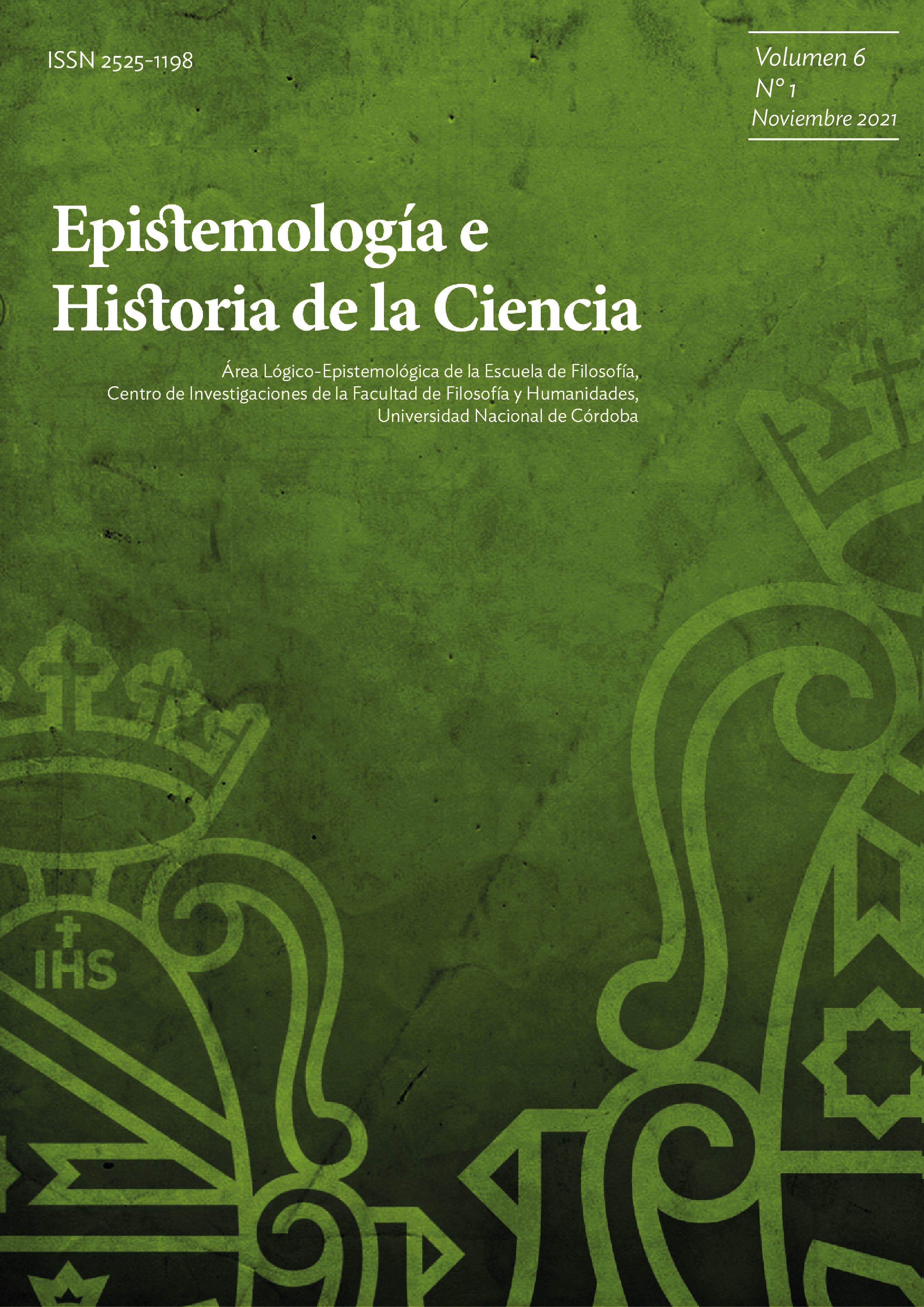A critical review of a Galileo thought experiment on falling bodies and the design of an alternative experiment
Keywords:
Galileo and Aristotle, thought experiment and real experiment, free falling bodies, equivalence of inertial and gravitational massAbstract
In the thought experiment that we study in this article, Galileo attempts to refute the Aristotelian hypothesis that heavier bodies should take less time to fall than lighter ones. After pointing out some inconsistencies in Galileo's approach, we show, through the design of two alternative but equivalent experiments to his, that from his imaginary experiment it is not possible to reach the conclusion that all bodies fall simultaneously into a vacuum. In turn, we design a thought experiment from which it follows that, under the same initial conditions, all bodies, regardless of their weight and composition, must fall with the same acceleration. We show why, to explain the result of this type of experiences, whether real or imaginary, it is necessary to establish the equivalence between inertial and gravitational masses, equivalence derived exclusively from experience and that gave rise to the so-called Equivalence Principle as used in the General Theory of Relativity.
References
Aristóteles. (1995). Física (G. R. de Echandía, Trad.). Gredos.
Aristóteles. (1996). Acerca del cielo; Meteorológicos (M. Candel, Trad.). Gredos.
Benedetti, G. B. (1585). Diversarum speculationum mathematicarum & physicarum liber [Diversas especulaciones matemáticas y físicas]. Apud Haeredem Nicolai Bevilaquae.
Brown, J. (1991). The laboratory of the mind: Thought experiments in the natural sciences. Routledge.
Cohen, I. B. (1967). Galileo, Newton, and the Divine Order of the Solar System. En E. McMullin (Ed.), Galileo, Man of Science (pp. 207-231). Basic Books.
Crombie, A. C. (1976). Historia de la Ciencia de San Agustín a Galileo. Vol II. Alianza.
El Skaf, R. (2018). The function and limit of Galileo’s falling bodies thought experiment: Absolute weight, Specific weight and the Medium’s resistance. Croatian Journal of Philosophy, 18(52), 37-58.
Eötvös, R., Pekár, D., & Fekete, E. (1922). Beiträge zum gesetze der proportionalität von trägheit und gravität. Annalen der Physik, 373(9), 11-66.
Galilei, G. (1980). Dialogo sobre los sistemas máximos [Dialogo sopra i due Massimi sistema del mondo]. Aguilar. (Obra original publicada en 1632)
Galilei, G. (2003). Diálogo acerca de dos nuevas ciencias [Discorsi e dimostrazioni matematiche, intorno à due nuove scienze.]. Losada. (Obra original publicada en 1638)
Gendler, T. S. (1998). Galileo and the indispensability of scientific thought experiment. The British Journal for the Philosophy of Science, 49(3), 397-424.
Grundmann, T. (2017). Platonism and the a priori in thought experiments. En M. T. Stuart, Y. Fehige, & J. Brown (Eds.), The Routledge companion to thought experiments (pp. 293-308). Routledge.
Koyré, A. (1978). El De motu Gravium de Galileo. En Estudios de historia del pensamiento científico. Siglo XXI.
Koyré, A. (1981). Estudios galileanos (2.a ed.). Siglo XXI.
Misner, C. W., Thorne, K. S., & Wheeler, J. A. (1973). Gravitation. Freeman.
Mondragón, D. (2020). Experimentos mentales en ciencias naturales. Universidad Nacional Autónoma de México.
Newton, I. (1993). Principios matemáticos de la filosofía natural [Philosophiæ naturalis principia mathematica]. Altaya. (Obra original publicada en 1687)
Norton, J. D. (1996). Are thought experiments just what you thought? Canadian Journal of Philosophy, 26(3), 333-366.
Palmieri, P. (2005). ‘Spuntar lo scoglio più duro’: Did Galileo ever think the most beautiful thought experiment in the history of science? Studies in History and Philosophy of Science Part A, 36(2), 223-240.
Popper, K. (1967). La lógica del descubrimiento científico. Tecnos.
Roll, P. G., Krotkov, R., & Dicke, R. H. (1964). The equivalence of inertial and passive gravitational mass. Annals of Physics, 26(3), 442-517.
Will, C. M. (1993). Theory and Experiment in Gravitational Physics. Cambridge University Press.
Downloads
Published
Issue
Section
License
Copyright (c) 2021 Epistemología e Historia de la Ciencia

This work is licensed under a Creative Commons Attribution-NonCommercial-NoDerivatives 4.0 International License.
En todos los lugares donde aplique, esta obra está bajo una licencia Creative Commons Reconocimiento-NoComercial-SinObrasDerivadas 4.0 .
- Los autores/as conservarán sus derechos de autor y garantizarán a la revista el derecho de primera publicación de su obra, el cual estará simultáneamente sujeto a la Licencia de reconocimiento de Creative Commons que permite a terceros compartir la obra, siempre que se indique su autor y su primera publicación en esta revista.
- Los autores/as podrán adoptar otros acuerdos de licencia no exclusiva de distribución de la versión de la obra publicada (p. ej.: depositarla en un archivo digital institucional o publicarla en un volumen monográfico), siempre que se indique la publicación inicial en esta revista.
- Se permite y recomienda a los autores/as difundir su obra a través de Internet (p. ej.: en archivos digitales institucionales o en su página web) antes y durante el proceso de envío.
- Las licencias de las imágenes de terceros incluidas en los artículos pueden estar sujetas a otros términos; los autores/as son responsables de asegurar la veracidad de su origen, la información de la fuente original provista y su permiso de reproducción en esta publicación, que puede ser exclusivo.







